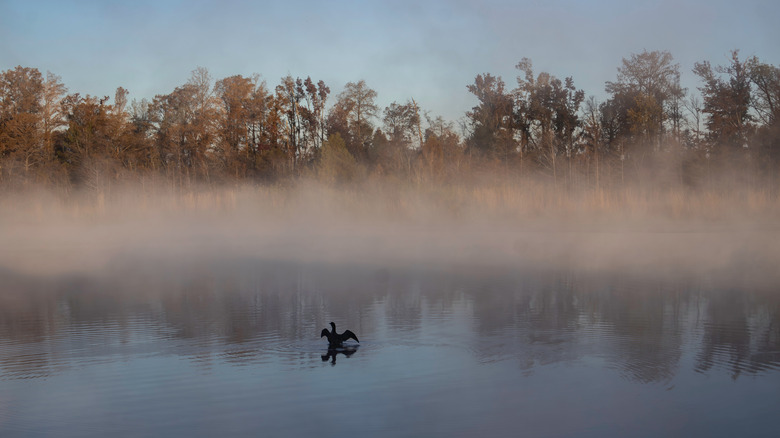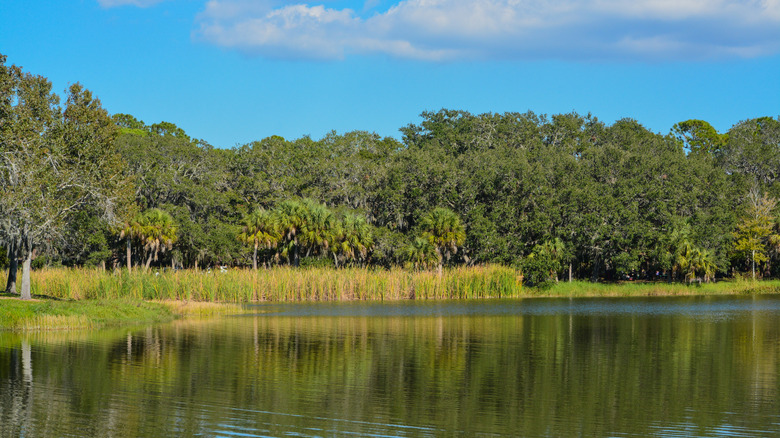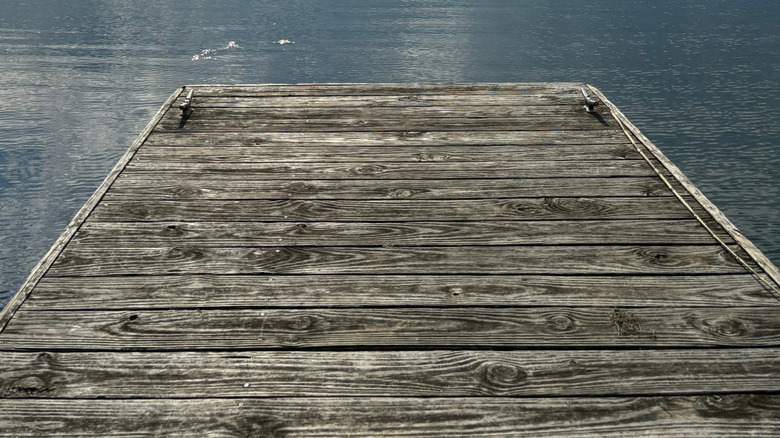Situated On The Florida-Georgia Line With World-Class Fishing And Boating Is A Freshwater Paradise
It's no wonder that Florida is sometimes called the "Fishing Capital of the World." Apart from its 8,436 miles of Atlantic and Gulf shoreline, the state's freshwater lakes are renowned for sport fishing, including Florida's largest freshwater lake, an "inland sea" that draws fishing fanatics from across the country. One lesser-known fishing and boating destination is Lake Seminole, a 37,500-acre reservoir on the border of Florida, Georgia, and Alabama. Located at the spot where the Flint, Chattahoochee, and Apalachicola rivers meet, the lake is full of a diverse variety of fish, including striped bass, black crappie, chain pickerel, bluegill, and more.
The man-made lake is named for the Native American tribe that originally inhabited the region. Submerged in water at the bottom of the basin are the remains of a fort built in 1816 to defend the area from the Spanish. Though use of the fort ended just a few years later, when Florida became part of the United States, it wasn't until the 1950s that a dam was built nearby and the lake was filled by the U.S. Army Corps of Engineers.
Fishing on Lake Seminole
If you're hoping to catch a fish at Lake Seminole, joining a fishing trip is a smart choice. Local outfitters run small group trips that last four, six, or eight hours. Prices vary — it's more affordable to go with a few other people and fill the fishing boat (the cost for three passengers is $425 for a four-hour trip) versus going it alone (a solo trip starts at $325 for a four-hour session). Since the reservoir is currently home to over 46 species of fish, conditions are good for fishing enthusiasts of all experience levels. Want another adventure out on the water? Check out Pine Island, Florida's under-the-radar island with scenic fishing spots — it's several hours away from Lake Seminole, but its fishing spots are just as enticing.
Boaters can launch kayaks or canoes from privately owned ramps and marinas around the lake. There are also a few ramps for canoes and kayaks at Three Rivers State Park. Nature trails wind through the pine forests around the lake, ideal for quiet hikes and birdwatching, as the woods are a natural habitat for osprey and bald eagles. Keep your eyes open for alligators that are sometimes spotted on the lake — and, of course, keep your distance, too.
Plan your trip to Lake Seminole
Several camping areas around the lake offer overnight accommodations. On the Georgia side, Seminole State Park has 50 tent campsites (though check their availability, as they're being renovated at the time of writing). There are also cottages (from $195 per night in autumn) as well as a sandy beach, a fishing dock, picnic shelters, and boat ramps. Alternatively, check into a privately owned lake cabin listed on VRBO or Airbnb, which can be a solid value.
Many visitors pick up picnic supplies before arriving at the lake, especially if they're camping. But there are some recommended dining venues near the lake, too, including Big Jim's Oyster Bar & Restaurant in Donalsonville, GA, and Susie and Sam's Steakhouse, housed in what was once the downtown library in Bainbridge, GA.
Though it depends on which direction you're coming from — the lake is large — the most convenient airport for travelers to the region is Tallahassee International Airport, about an hour's drive from Bainbridge or an hour and twenty minutes from Seminole State Park. A car is necessary for exploring the region, as it's not well served by public transportation. If you're considering an extended road trip south through Florida, be sure to check out one of Florida's best-kept secrets, a maze of Gulf Coast islands with fresh seafood and clear waters.


